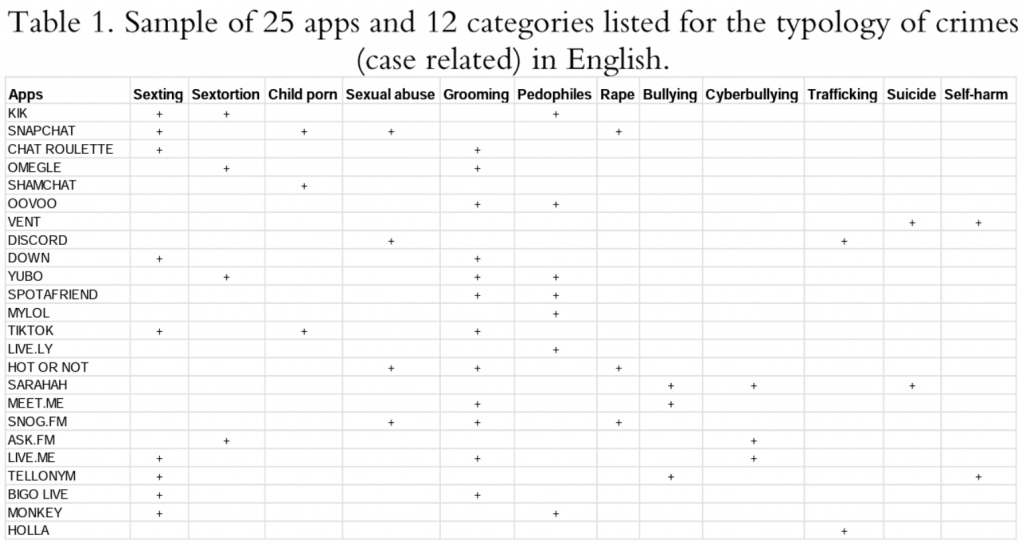“New Trends in Online Crime Using Social Networking Sites and Apps Against Children: Police-Based Longitudinal Research,” written by Gonzalo Torquemada de la Hoz and published in the International Journal of Cyber Criminology in June of 2021, presents readers with the results of archival research on the use of social networking sites (SNS) and social media applications by criminals predating on minors. The primary research questions the article seeks to answer are how SNSs and apps have developed into tools used by criminals, what dangers these platforms pose to children and adolescents, and what trends in online crime exist through these platforms.
In the article, Torquemada de la Hoz (2021) presents the findings of the first phase of the HUMANIZATECH project, an empirical longitudinal study of archival data collected from 140 police departments worldwide. Methodologies used include non-participant observation, content analysis, social network analysis, and case studies. 31 keyword categories were chosen in English, French, and Spanish to monitor news websites for additional information related to crimes on these platforms. Content curation was used to ensure the veracity of information to avoid the introduction of misinformation to the study. Facebook and Twitter accounts for police forces around the globe were also monitored for the duration of the study. The study found 695 cases of criminal behavior against minors across 81 separate social media platforms. Trends noted among cybercriminals are an increasing sophistication regarding knowledge of IT skills and the use of SNSs, Apps, and video games frequently used by minors. Limitations to the study stem from the fact that the data used comes from online published news materials. Actual police case data would improve the quality of data but is protected information in many cases. Collection and analysis of the data was also performed using free tools, and it is believed that paid analysis could improve the accuracy and consistency of the data.

Only passing mention is given to marginalized groups within the article. It is stated that certain social media platforms are used primarily by marginalized groups, such as African American and Latino communities with the app Mocospace and gay men with Grindr. Nothing is stated about how children within these marginalized groups may be targeted for cybercrime differently. It is stated that potential victims exhibit symptoms related to mental illness or addiction. Additional mention is given to children in abusive or neglectful households are exceptionally vulnerable due to the role family plays in prevention and intervention (Torquemada de la Hoz 2021).
A stated major objective of the study is to increase parental responsibility and awareness regarding dangers to children presented by social media. This raises questions about the objectivity of the study. As previously mentioned, the study was performed by collecting empirical data from news sites and police departments. Relativism is directly acknowledged by the study, with the statement that “multi-disciplinary research is welcome since this research proves a convergence of criminal, legal, behavioral, and educational issues to understand the scope of new trends in online crime” (Torquemada de la Hoz 2021).
Reference
Torquemada de la Hoz, G. (2021). New Trends in Online Crime Using Social Networking Sites and Apps against Children and Adolescents: Police-Based Longitudinal Research. International Journal of Cyber Criminology, 15(1), 31–49. https://doi.org/10.5281/zenodo.4766531